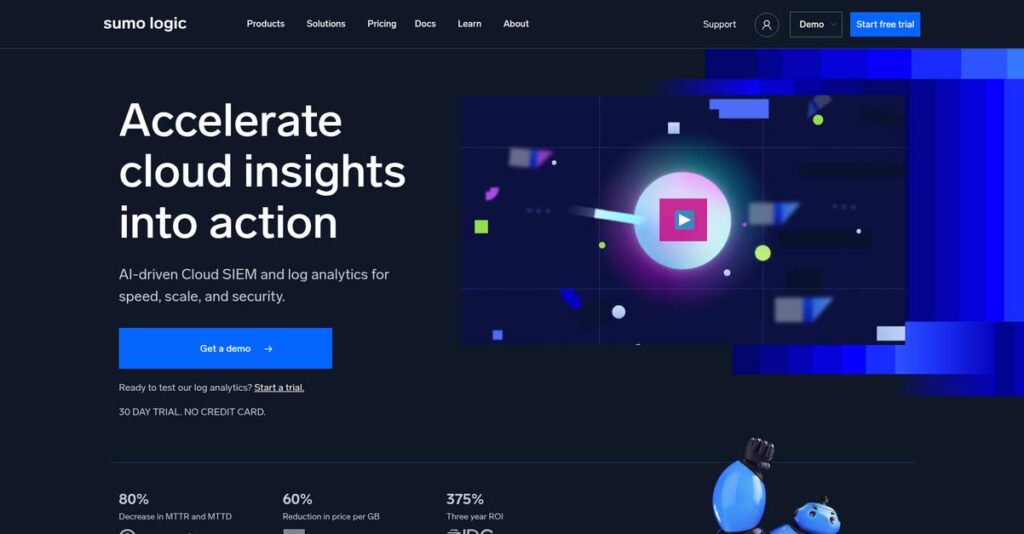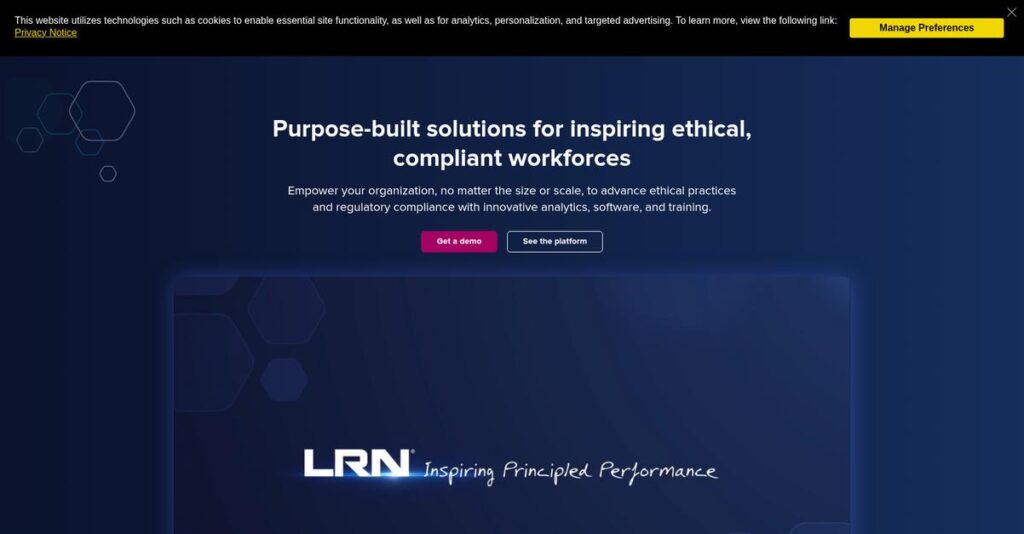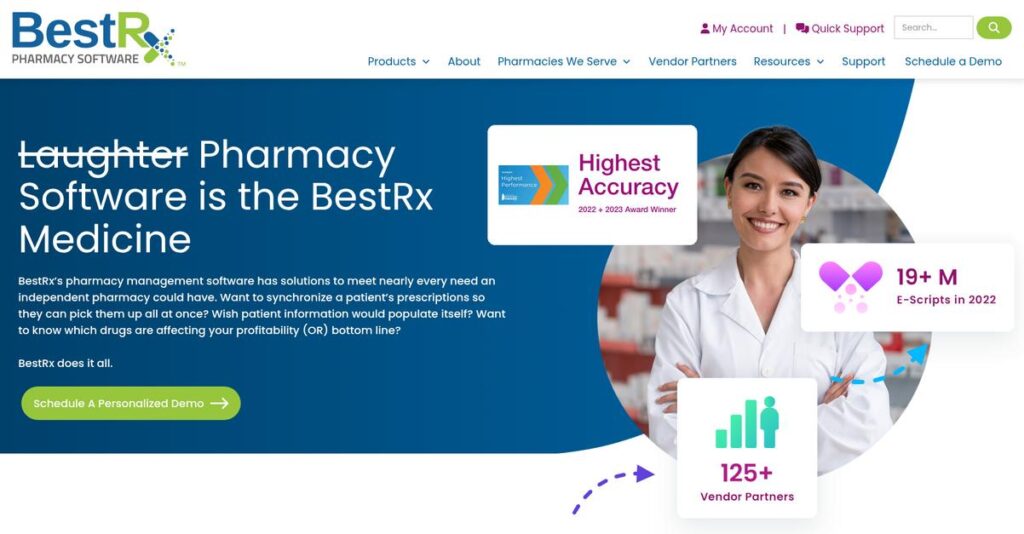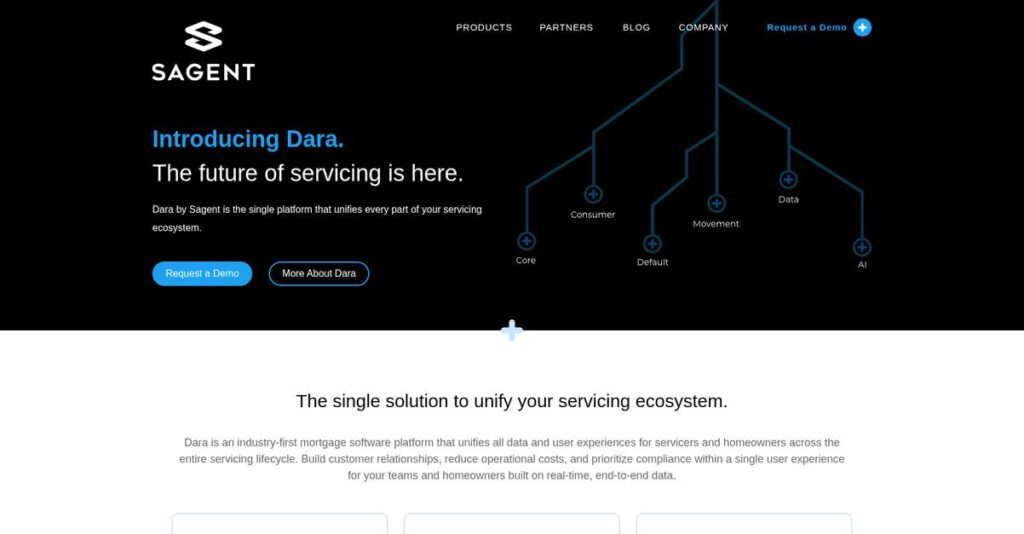Drowning in log data and alerts again?
If you’re trying to pick a tool that helps wrangle endless logs, streamline security, and make sense of all those events, you’re probably weighing Sumo Logic for exactly that reason.
But here’s the catch—chasing down root causes and critical alerts eats hours daily, and you’re still left with blind spots that hurt your security and operations.
Sumo Logic approaches these pain points differently, with an AI-powered, cloud-native platform that brings log management, SIEM, and observability together—so you can troubleshoot quickly, catch threats early, and keep compliance covered without feeling buried in noise. Their new Flex Licensing also promises free, unlimited log ingest, changing the cost equation if you’re scaling fast.
In this review, I’ll break down how Sumo Logic cuts through the data overload and helps your team actually see what’s happening across your apps, infrastructure, and cloud.
In this Sumo Logic review, you’ll discover how the main features work, real pricing implications, implementation insights from hands-on testing, and how the platform stacks up against Logz.io, Datadog, and Splunk—so you can make a confident decision for your specific needs.
By the end, you’ll understand the features you need to finally take control of your logs and security without overpaying or adding complexity.
Let’s dive right in.
Quick Summary
- Sumo Logic is a cloud-native platform that provides continuous intelligence through advanced log management, security analytics, and monitoring.
- Best for IT, DevOps, and security teams managing large volumes of machine data across cloud environments.
- You’ll appreciate its machine learning-driven insights that speed up troubleshooting and improve threat detection.
- Sumo Logic offers flexible tiered pricing, including a free trial and a new Flex Licensing model with free unlimited log ingestion.
Sumo Logic Overview
Sumo Logic has been around since 2010, founded in California by ArcSight veterans. Their mission provides “continuous intelligence” from a single cloud-native analytics platform.
They primarily serve IT operations, development, and security teams across all business sizes. I find their unified platform for security and observability particularly effective, as it’s designed to handle all of your various enterprise data types without requiring complex setup.
After being taken private in 2023, they introduced a bold new Flex Licensing model. It’s a key development I’ll explore through this Sumo Logic review.
Unlike competitors like Splunk, which tie costs to data volume, Sumo Logic positions itself with predictable costs and lower operational overhead. It feels built by people who truly understand the pain of surprise bills and complex platform management.
You’ll find them working with a wide range of organizations, including Fortune 500s and growing SMBs, especially those struggling with massive security, operations, and compliance data.
- 🎯 Bonus Resource: While we’re discussing data management, understanding mobile data recovery software is equally important, especially if you deal with diverse data sources.
Their current strategy clearly centers on using AI to simplify log troubleshooting while completely overhauling traditional log management economics. This directly addresses your potential need for tighter cost control without sacrificing powerful analytics.
Now let’s examine their core capabilities.
Sumo Logic Features
Struggling to make sense of your overwhelming data?
Sumo Logic features actually transform raw logs and metrics into actionable insights. Here are the five main Sumo Logic features that provide continuous intelligence.
1. Log Management and Analytics
Drowning in a sea of unanalyzed log data?
Manually sifting through logs for issues can be time-consuming and frustrating. This often leads to delayed problem resolution and missed anomalies.
Sumo Logic centralizes log collection from all your systems, using machine learning to identify patterns and anomalies, even in massive datasets. I found that LogReduce helps quickly pinpoint critical issues among millions of entries, accelerating troubleshooting significantly. This feature makes finding the needle in the haystack much easier.
This means you can proactively analyze and resolve issues, drastically cutting down on investigation time and improving operational efficiency.
2. Cloud SIEM
Worried about undetected security threats?
Security incidents can slip through the cracks without real-time correlation and advanced threat detection. This leaves your organization vulnerable to breaches.
Cloud SIEM integrates threat intelligence and behavioral analytics to automate the detection and response to security incidents. What I love about this approach is how it correlates data across sources to reveal subtle threats, enabling proactive threat management. This feature provides a centralized hub for real-time monitoring.
The result is your security team can pinpoint and respond to malicious activities much faster, significantly reducing the risk of data breaches.
3. Cloud Infrastructure Security
Struggling to secure your sprawling cloud infrastructure?
Maintaining a secure cloud environment is tough when you lack continuous visibility into configurations and potential vulnerabilities. This exposes you to compliance risks.
This solution provides continuous monitoring and protection for your cloud-native services with apps for AWS CloudTrail and Security Hub. From my testing, it really shines in providing visibility into user activity and security posture, helping you assess against benchmarks. This feature ensures your cloud environment remains secure.
So as an operations professional, you can maintain a robust cloud security posture, effortlessly tracking activity and monitoring threats to comply with standards.
4. Compliance and Audit
Nervous about meeting complex compliance regulations?
Proving compliance with standards like GDPR or HIPAA can be a manual nightmare without robust audit trails and reporting. This puts you at risk of penalties.
Sumo Logic helps you meet compliance standards with pre-built applications for various needs like PCI and AWS Audit. Here’s the thing – you can build custom queries and dashboards to ensure only authorized users access sensitive information, aiding both internal and external audits. This feature simplifies maintaining regulatory adherence.
This means you can easily generate comprehensive audit trails and reports, ensuring you pass internal and external audits with confidence and ease.
5. Application Observability and Infrastructure Monitoring
Can’t get a clear picture of application performance?
Diagnosing issues and ensuring optimal user experiences is a constant battle without real-time insights into your applications and infrastructure. This impacts your users.
Beyond security, this feature provides comprehensive monitoring for applications and underlying infrastructure, diagnosing issues and ensuring optimal user experiences. This is where Sumo Logic gets it right by centralizing log collection and applying machine learning to identify issues quickly. This helps improve the efficiency of IT operations.
What you get instead is real-time insights into performance metrics, events, and traces, ensuring your applications run smoothly and efficiently.
Pros & Cons
- ✅ Ingests and analyzes massive volumes of log data with powerful queries.
- ✅ Offers robust Cloud SIEM with advanced threat detection and automation.
- ✅ Cloud-native architecture provides excellent scalability and stability for high data volumes.
- ⚠️ Users report a steep learning curve for advanced features and query language.
- ⚠️ Some users find integration options to be fewer than competitors.
- ⚠️ Documentation can be outdated in certain areas, hindering user self-service.
These Sumo Logic features work together to create a comprehensive continuous intelligence platform. This helps you get full visibility and control over your digital environment.
Sumo Logic Pricing
What will Sumo Logic’s pricing cost your business?
Sumo Logic pricing employs a tiered and volume-based model, with recent innovations like the Flex Plan aimed at providing more predictable costs for varying data needs.
| Plan | Price & Features |
|---|---|
| Free Plan | Free • Up to 1 GB/day logs • 7-day log data retention • Community support • Limited metrics & tracing capacity |
| Essentials Plan | Estimated $90/month (or $3.00/GB logs) • 3-5 GB/day data volume • 30-day data retention • Up to 5 users • Basic support |
| Flex Plan | Estimated $2.05 – $3.14 per TB scanned • Unlimited log data ingest • Pricing based on data scanned • Customer-defined data retention • Enterprise-grade 24/7 support • Unlimited metrics & tracing capacity |
| Enterprise Plan | Custom pricing (Estimated $4.00/GB logs) • Unlimited log, metrics, tracing capacity • Customer-defined data retention • 24/7 P1 incident support • Designed for larger organizations |
| Enterprise Security / Suite | Custom pricing (Estimated $4.25 – $4.75/GB logs) • Advanced security features • Global operational & security insights • Unlimited DPM & tracing • 24/7 technical support |
1. Value Assessment
Predictable costs are available.
From my cost analysis, the new Flex Plan is a game-changer, offering unlimited log ingest where you only pay for what’s scanned. This approach helps you avoid budget surprises from unexpected data spikes, allowing your team to collect all necessary data without fear of massive overage charges.
This means your monthly costs stay predictable, supporting continuous intelligence without compromising your budget.
2. Trial/Demo Options
Evaluate before you commit.
Sumo Logic offers a 30-day free trial of their premier tier, allowing you to fully test the platform’s capabilities before committing. What I found regarding pricing is that this trial period is comprehensive enough for your team to truly assess value and ensure it fits your operational needs.
This lets you validate ROI and user adoption before spending money, reducing the risk of expensive software mistakes.
3. Plan Comparison
Matching plans to your scale.
The Free and Essentials plans suit smaller operations, while larger enterprises will look to the custom Enterprise or Flex plans. What stands out is how the Flex Plan fundamentally redefines log pricing by decoupling ingest from cost, which is crucial for modern AI-driven analytics.
This tiered approach helps you match Sumo Logic pricing to actual usage requirements rather than overpaying for unused capabilities.
- 🎯 Bonus Resource: While we’re discussing software that helps manage diverse data needs, my guide on best nutritionist software explores specialized client data tools.
My Take: Sumo Logic’s pricing strategy, especially with the new Flex Plan, is designed for scalability and predictability, making it a strong choice for businesses of all sizes looking for continuous intelligence without hidden costs.
The overall Sumo Logic pricing reflects innovative value aligned with modern data needs.
Sumo Logic Reviews
What do real customers actually think?
To help you decide, I’ve delved into numerous Sumo Logic reviews, analyzing user feedback to give you a clear picture of what customers genuinely think about this platform.
1. Overall User Satisfaction
Most users report strong satisfaction.
- 🎯 Bonus Resource: If you’re also looking into optimizing your data, my article on best sustainability software covers additional insights.
From my review analysis, Sumo Logic generally receives positive ratings, often averaging 4 stars or higher across major review sites. What I found in user feedback is how its powerful capabilities often outweigh its learning curve for many, indicating robust functionality is highly valued in the reviews.
This suggests you can expect a capable platform, provided you’re ready to invest in learning it.
2. Common Praise Points
Users consistently love its power.
Customers frequently praise Sumo Logic’s powerful log management and analytics, highlighting its ability to ingest and query vast data volumes. Review-wise, real-time monitoring and alerting capabilities also stand out, empowering quick issue detection and response, which users find incredibly valuable.
This means you can anticipate strong data insights and rapid issue resolution for your operations.
3. Frequent Complaints
The learning curve is a common hurdle.
The most recurring complaint in user feedback revolves around Sumo Logic’s steep learning curve, especially concerning its specific query language. What stands out is how new users often find the platform overwhelming to navigate, despite its eventual power once mastered.
These challenges imply an initial investment in training, but they aren’t necessarily deal-breakers for dedicated teams.
What Customers Say
- Positive: “Sumo Logic’s powerful query functions serve as a competitive function, providing insightful results.” (Gartner Peer Insights)
- Constructive: “Sumo has a specific querying language that does have a learning curve.” (Gartner Peer Insights)
- Bottom Line: “Sumo Logic is really stable in handling our data volumes, and, most important, it empowers our engineers.” (Engineering Manager)
Overall, Sumo Logic reviews reveal a powerful tool with a significant learning curve that pays off for persistent users.
Best Sumo Logic Alternatives
Considering Sumo Logic alternatives?
The best Sumo Logic alternatives include several strong options, each better suited for different business situations and priorities regarding budget, deployment, and specific use cases.
- 🎯 Bonus Resource: While we’re discussing unifying data, you might find my analysis of speech therapy software to unify data helpful.
1. Splunk
Need extensive customization and hybrid deployment?
Splunk is a mature platform offering robust features across log management, security, and analytics. From my competitive analysis, Splunk offers more extensive customization options for complex data and security needs, appealing if your organization requires on-premises or hybrid solutions.
Choose Splunk if you need a highly mature platform with wide features and flexible deployment over cloud-native simplicity.
2. Datadog
Seeking comprehensive monitoring with broad integrations?
Datadog excels in unified monitoring for dynamic IT environments, boasting over 800 out-of-the-box integrations. What I found comparing options is that Datadog provides extensive out-of-the-box integrations for broad visibility across your entire IT stack, including network and SaaS.
Consider this alternative when you prioritize wide-ranging, unified observability and pre-built integrations over deep log-specific ML.
3. Elastic (ELK Stack)
Prefer open-source flexibility and self-management?
Elastic offers a powerful open-source stack (ELK) providing maximum control over your data and infrastructure. From my analysis, Elastic gives you superior control over data infrastructure and customization, although it requires significant internal resources to manage and scale effectively.
Choose Elastic if you have the internal expertise for open-source solutions and demand ultimate data control.
4. New Relic
Is deep application performance monitoring your priority?
New Relic focuses heavily on APM and full-stack observability, providing real-time visibility into application performance. Alternative-wise, New Relic provides deeper application performance insights and distributed tracing capabilities, often praised for its ease of deployment and customer service.
Choose New Relic if your primary need is broad application observability across the software development lifecycle.
Quick Decision Guide
- Choose Sumo Logic: Cloud-native log management, SIEM, and cost-effective analytics
- Choose Splunk: Complex enterprise needs, hybrid deployment, extensive features
- Choose Datadog: Broad observability, numerous out-of-the-box integrations
- Choose Elastic: Open-source control, high customization, self-management
- Choose New Relic: Deep application performance monitoring and full-stack observability
The best Sumo Logic alternatives depend on your specific operational scale and deployment preferences rather than just features.
Sumo Logic Setup
What does Sumo Logic implementation really involve?
Understanding Sumo Logic setup is key to a smooth rollout. This Sumo Logic review section unpacks the practicalities of deployment, helping you set realistic expectations for your business.
1. Setup Complexity & Timeline
Not just a simple click-and-go.
Sumo Logic implementation offers pre-built dashboards, which streamlines initial data ingestion and visualization. From my implementation analysis, initial setup can be intricate for advanced features or if your team lacks cloud environment familiarity, requiring careful planning beyond basic deployment.
- 🎯 **Bonus Resource:** Speaking of efficiency, my guide on financial services software explores additional optimization strategies.
You’ll need a clear understanding of your log management practices and cloud environments upfront to avoid delays.
2. Technical Requirements & Integration
Prepare your IT for robust integrations.
Your team will integrate data via agents, APIs, syslog, and various cloud platforms like AWS and Azure. What I found about deployment is that Sumo Logic’s cloud-native architecture scales effortlessly, eliminating on-premises infrastructure, but requires proper configuration for optimal data flow.
Plan for seamless data ingestion strategy and ensure your IT team is ready to manage diverse integrations.
3. Training & Change Management
Get ready for a significant learning curve.
Your users will face a steep learning curve, especially with Sumo Logic’s specific querying language and advanced features. From my analysis, significant training and experience are required to write effective custom queries, despite the extensive documentation and free training offerings.
Invest in comprehensive training programs and dedicated time for your team to master the platform’s full capabilities.
4. Support & Success Factors
Vendor support can be a mixed bag.
While Sumo Logic offers 24/7 support for critical incidents, some users report occasional delays in issue resolution. From my analysis, issues sometimes get escalated internally, leading to slower solutions, so proactive planning and clear communication are key during implementation.
You should establish clear communication channels and project timelines, anticipating potential delays in complex issue resolution.
Implementation Checklist
- Timeline: Weeks to months depending on integration complexity
- Team Size: Dedicated IT and operations staff with cloud expertise
- Budget: Training and potential professional services beyond software
- Technical: Data ingestion strategy and cloud platform integrations
- Success Factor: Comprehensive user training for query language mastery
The overall Sumo Logic setup requires dedicated effort and continuous learning but delivers powerful insights when properly adopted.
Bottom Line
Is Sumo Logic the right choice for your data needs?
My Sumo Logic review shows a powerful cloud-native platform best suited for specific organizational profiles that value robust log management and security analytics.
1. Who This Works Best For
Organizations prioritizing cloud-native observability and security.
Sumo Logic excels for IT operations, DevOps, and SecOps teams in SMBs to Fortune 500s undergoing digital transformation and cloud adoption. What I found about target users is that organizations with significant log data volumes benefit most from its machine learning-driven insights.
You’ll succeed if your team needs centralized visibility for rapid root cause analysis, threat detection, and compliance monitoring.
2. Overall Strengths
Unified continuous intelligence sets it apart.
The software succeeds by providing scalable, multi-tenant architecture and machine learning-driven insights for threat detection and root cause analysis. From my comprehensive analysis, Flex Licensing redefines cost-effectiveness for high ingestion by offering free, unlimited log data ingest.
These strengths translate directly into faster incident response, improved operational efficiency, and a stronger security posture for your business.
- 🎯 Bonus Resource: While we’re discussing improved operational efficiency, don’t overlook tools like best board meeting software to streamline your decision-making.
3. Key Limitations
Learning curve and integration challenges are concerns.
While powerful, new users frequently report a steep learning curve, especially for advanced features and custom queries. Based on this review, some users experience occasional delays in support response times and fewer out-of-the-box integrations compared to certain competitors.
I’d say these limitations are manageable if your team is prepared for initial training, but they could be deal-breakers for organizations needing immediate ease of use.
4. Final Recommendation
Sumo Logic comes with a strong recommendation.
You should choose this software if your priority is a comprehensive, cloud-based solution for log management, security analytics, and observability. From my analysis, your success hinges on embracing its robust query language and leveraging its machine learning capabilities for deep insights.
My confidence level is high for organizations prioritizing deep log analytics and a flexible pricing model for high data ingestion.
Bottom Line
- Verdict: Recommended for cloud-native DevSecOps and observability
- Best For: IT Ops, DevOps, and SecOps teams in cloud-first organizations
- Business Size: SMBs to large enterprises with significant, growing log data volumes
- Biggest Strength: Powerful log management with ML-driven insights and Flex Licensing
- Main Concern: Steep learning curve for advanced queries and integration scope
- Next Step: Request a demo to explore its advanced features and pricing model
This Sumo Logic review showcases strong value for cloud-centric organizations, while also highlighting the learning commitment required for full adoption and maximum benefits.






